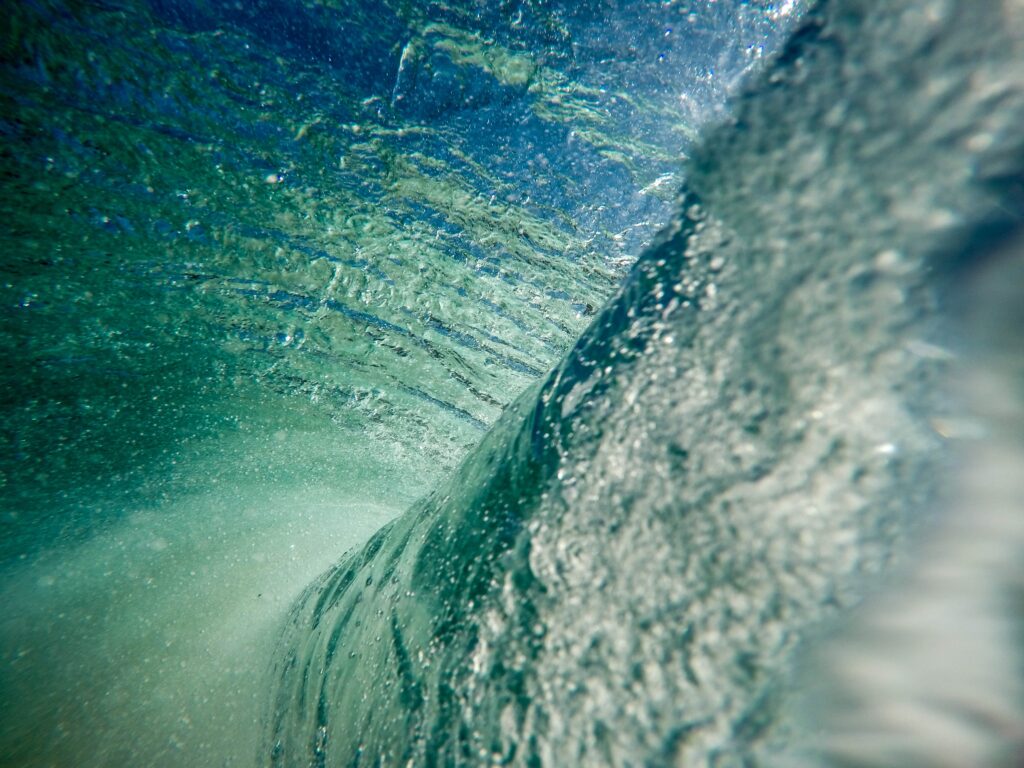Did you ever wonder if acrylic paints are water soluble? Well, wonder no more! In this article, we will explore the fascinating world of acrylic paints and determine whether or not they can be easily dissolved in water. Whether you’re an artist or simply interested in the science behind paints, this article will provide all the information you need to know about the solubility of acrylic paints. Get ready to dive into the world of art and chemistry!

What are acrylic paints?
Acrylic paints are a versatile type of paint that is popular among artists of all skill levels. They are made from a mixture of pigments, binders, and water. Acrylic paints are known for their quick drying time, vibrant colors, and ability to be diluted with water. This makes them a popular choice for various art projects, from canvas paintings to crafts.
Composition of acrylic paints
Acrylic paints are composed of three main components: pigments, binders, and water. The pigments are what give the paint its color, and they can be either natural or synthetic. The binders, usually made from polymers, are what hold the pigments together and give the paint its adhesive properties. Lastly, the water acts as a solvent and helps to thin out the paint for easier application.
Properties of acrylic paints
Acrylic paints have several properties that make them unique and desirable for artists. One of the key properties is their quick drying time. Unlike other types of paint, acrylics dry quickly, allowing artists to build up layers of paint without having to wait for extended periods of time. Additionally, acrylic paints are known for their permanence and durability, making them a great choice for long-lasting artworks. They also have excellent color retention and are resistant to cracking or yellowing over time.
Water solubility of acrylic paints
Understanding water solubility
Water solubility refers to the ability of a substance to dissolve in water. In the case of acrylic paints, water solubility means that the paint can be easily diluted and cleaned up with water. This characteristic makes acrylic paints incredibly convenient to work with, especially for artists who prefer a more fluid and watercolor-like effect in their paintings.
Why are acrylic paints considered water-soluble?
Acrylic paints are considered water-soluble because their binders are made from acrylic polymers, which are soluble in water. When water is added to the paint, it breaks down the polymer chains and thins out the paint, making it easier to manipulate and apply. This water-soluble property also allows for easy clean up, as brushes and palettes can be rinsed with water instead of harsh solvents.
Limitations of water solubility in acrylic paints
While acrylic paints are water-soluble, it’s important to note that once the paint has dried, it becomes water-resistant. This means that if you want to add layers or make changes to a dried acrylic painting, you will need to use additional layers of fresh paint instead of relying on water. Additionally, the water-soluble nature of acrylics can also make them susceptible to reactivation if they come in contact with water after drying, which may lead to smudging or blending of colors unintentionally.
Difference between water-soluble and traditional acrylic paints
Water-soluble acrylic paints
Water-soluble acrylic paints, also known as water-mixable or water-based acrylics, are a type of acrylic paint that can be mixed and diluted with water. They have the same pigments and binders as traditional acrylic paints but with a modified binder formula that allows for water solubility. These paints offer artists the convenience of working with acrylics while also having the option to create watercolor-like effects.
Traditional acrylic paints
Traditional acrylic paints, in contrast to water-soluble acrylics, are not water-soluble. They are made with the same pigments and binders as water-soluble acrylics but have a different binder formula that does not dissolve in water. Traditional acrylics require a solvent or medium, such as acrylic mediums or oils, for dilution and cleanup. However, traditional acrylics offer a more extensive range of textures and finishes compared to their water-soluble counterparts.
Benefits of water-soluble acrylic paints
Ease of use and cleanup
One of the major benefits of using water-soluble acrylic paints is their ease of use and cleanup. Since they can be diluted and cleaned up with water, there is no need for potentially harmful solvents or mediums. This makes them a safer option, especially for artists who work in small spaces or have sensitivities to chemicals. Water-soluble acrylics also dry quickly, allowing for faster painting sessions and reduced waiting time between layers.
Blending capabilities
Water-soluble acrylic paints offer excellent blending capabilities, similar to traditional acrylics. Artists can easily achieve smooth transitions and gradients by wetting their brushes or using a spray bottle to create a water mist on the canvas. This allows for more flexibility in creating different textures and effects, from soft washes to bold brushwork.
Compatibility with water-based mediums
Water-soluble acrylic paints are compatible with a variety of water-based mediums, such as acrylic gels, glazes, or impasto mediums. These mediums can be mixed with the paint to alter its consistency, drying time, or transparency. The versatility of water-soluble acrylics in combination with different mediums opens up endless possibilities for artists to experiment with different techniques and styles.

Preparing the painting surface
Choosing the right surface
Choosing the right surface for your water-soluble acrylic painting is crucial for achieving the desired results. There are a variety of surfaces available, including canvas, paper, wood, and more. Each surface has its own characteristics and texture, which can affect how the paint adheres and interacts with the surface. Consider the effect you want to achieve and the durability of the surface when selecting your painting substrate.
Surface preparation methods
Before applying paint to the surface, it’s important to prepare it properly to ensure proper adhesion and longevity of your artwork. For canvas surfaces, it is common to apply an acrylic gesso primer to create a smooth and stable base. Similar surface preparation techniques can be applied to other surfaces, such as wood panels or paper. The gesso primer not only helps the paint adhere better but also prevents the paint from seeping into the surface and compromising its integrity.
Painting techniques with water-soluble acrylics
Wet-on-wet technique
The wet-on-wet technique involves applying wet paint onto a wet surface. With water-soluble acrylic paints, this technique allows for smooth blending and gradations of color. To achieve this, wet your canvas with a mist of water using a spray bottle or a brush before applying the paint. This technique is ideal for creating soft, flowing backgrounds or atmospheric effects.
Dry brush technique
The dry brush technique involves using a minimal amount of paint on a relatively dry brush. This technique emphasizes the texture of the canvas or surface by allowing the brushstrokes to show. With water-soluble acrylics, you can achieve a more controlled dry brush effect by applying less water to the paint or by using a higher viscosity paint. This technique is great for adding fine details or adding texture to your artwork.
Glazing technique
The glazing technique involves layering transparent or translucent washes of paint over dried layers. With water-soluble acrylics, you can easily create glazes by diluting the paint with water or a glazing medium. This technique allows for the creation of luminous and vibrant colors without losing the underlying layers. Glazing can be used to add depth, richness, and complexity to your paintings.

Sealing and protecting the artwork
Importance of sealing acrylic paintings
Sealing acrylic paintings is crucial for protecting your artwork from the damaging effects of sunlight, moisture, and dust. Acrylic paints are prone to fading over time when exposed to direct sunlight, so applying a sealant helps to reduce the potential color shift. Additionally, sealing your artwork provides a protective barrier that prevents dust and moisture from entering the painted surface, ensuring the longevity of your piece.
Different sealants for water-soluble acrylics
There are various options for sealing water-soluble acrylic paintings, depending on the desired finish and level of protection. Some common sealants include acrylic varnishes, which can be applied as a final layer to provide a glossy, matte, or satin finish. It is essential to select a sealant that is compatible with water-soluble acrylic paints to avoid any adverse reactions or alterations to the artwork’s appearance.
Tips for working with water-soluble acrylics
Mixing with water
When working with water-soluble acrylic paints, it’s important to find the right balance of paint and water for your desired effect. Adding water to the paint can make it more transparent and flow more easily, while using less water creates a thicker consistency with more coverage. Experimenting with different ratios of paint to water will help you determine the ideal consistency for your painting style.
Using mediums
Water-soluble acrylic paints can be further modified and enhanced by using various mediums. These mediums can change the characteristics of the paint, such as drying time, texture, or sheen. Experiment with different mediums, such as gloss or matte mediums, texture gels, or glazing mediums, to see how they affect the behavior of your water-soluble acrylics and expand your creative possibilities.
Working with different viscosities
Water-soluble acrylic paints come in different viscosities, ranging from thin to heavy body. Thin or fluid acrylics have a watery consistency and are ideal for creating washes or transparent layers. Heavy body acrylics have a thicker consistency and hold their shape well, making them suitable for impasto techniques or adding texture to your artwork. Understanding the characteristics of different viscosities will allow you to choose the right paint for your desired outcome.

Cleaning and maintaining brushes
Cleaning brushes after painting
Properly cleaning your brushes after painting with water-soluble acrylics is essential to maintain their performance and longevity. Rinse your brushes thoroughly with water immediately after use to remove any remaining paint. Avoid using hot water, as it can damage the bristles. For stubborn paint or dried paint residue, you can use a mild soap or brush cleaner specifically designed for acrylic paints.
Storing brushes properly
After cleaning, it’s important to store your brushes properly to prevent damage and maintain their shape. Ideally, brushes should be stored upright or horizontally in a brush holder or container. Avoid storing brushes with their bristles facing down, as this can cause them to become misshapen or bent. Additionally, make sure brushes are completely dry before storing them to prevent the growth of mold or mildew.
Water-soluble acrylic paints and varnishing
Compatibility with varnishes
Water-soluble acrylic paintings can be varnished to provide additional protection and enhance the appearance of the artwork. However, it’s essential to ensure that the varnish is compatible with water-soluble acrylics. Some varnishes may cause the paint to reactivate or alter the colors. Look for varnishes specifically designed for water-soluble acrylics to ensure the best results.
Applying varnish to water-soluble acrylic paintings
When applying varnish to water-soluble acrylic paintings, it’s important to follow the manufacturer’s instructions carefully. Some varnishes can be applied directly to the dry paint surface, while others may require a barrier coat or thinning with water. Use a soft brush or sponge applicator to apply the varnish evenly, and allow it to dry completely before handling or displaying the artwork.
In conclusion, water-soluble acrylic paints offer a convenient and versatile option for artists looking to explore different painting techniques and styles. Their water solubility allows for easy cleanup and the creation of unique effects, while their quick drying time and durability make them suitable for various art projects. By understanding the composition, properties, and techniques associated with water-soluble acrylics, artists can unlock a world of creative possibilities and enjoy the benefits of this wonderful medium.




